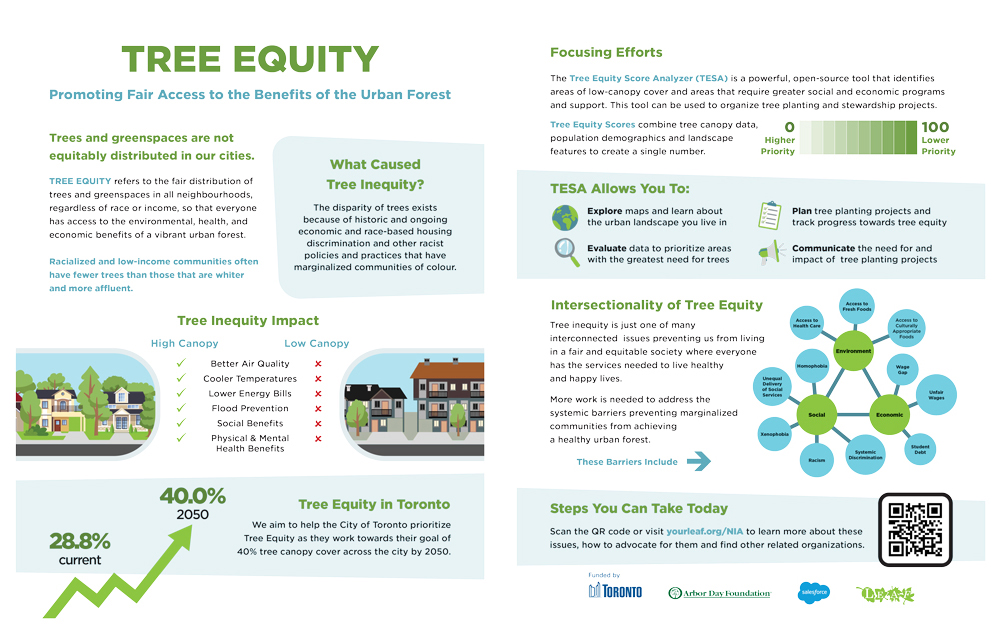It has been well researched that tree cover is not equitably distributed in Toronto, with low-income communities often having lower canopy cover. Communities that do not have healthy canopy cover experience higher surface temperatures because of the urban heat island effect and the multitude of resiliency benefits that trees provide (both physical and psychological) are not shared equally. With urban temperatures rising because of climate change, this inequitable access to the environmental and health-related benefits that trees provide is of growing importance.
With support from the Arbor Day Foundation, Salesforce and the City of Toronto, LEAF carryied out a 1-year pilot initiative ending in June 2024 to increase tree planting activities and grow the urban forest in low-canopy Neighbourhood Improvement Areas (NIAs). According to the Toronto Strong Neighbourhoods Strategy 2020, NIAs are defined as neighbourhoods facing the most inequitable (unnecessary, unfair and unjust) outcomes in five key areas: economic opportunities, social development, healthy lives, participation in decision-making and physical surroundings.
Low-canopy is defined as anything below 26.9%, which is the average canopy cover in Toronto, based on the most recent tree canopy and neighborhood data. Of the 33 NIAs in Toronto, 23 have below average canopy cover.

© 2024 City of Toronto. Click to view large map.
Learn more about this initiative
1. View our Tree Equity Factsheet:

© 2024 LEAF. Click to view pdf version.
2. Read more on our blogs:



